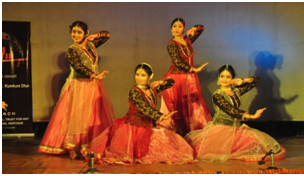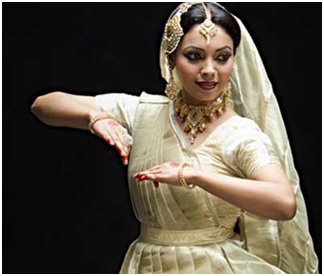The Birth of Kathak: Lucknow Gharana Back
The seeds of Kathak lay in the ancient Raas dhaari and Katha vaachaka traditions inter connected with the spread of Vaishnavism and these thrived mostly in the temples. The earliest kathaks to come to Lucknow (from Handia near Allahabad) were Maharaj Iswari Prasad Misra and his brothers and the style that they brought to Lucknow was named Natwari Nritya. Iswari Prasad Misra and his brothers and the style that they brought to Lucknow was named Natwari Nritya. Ishwari Prasad, inspired by Lord Krishna’s blessings wrote a book and trained his three sons Adguji, Khadguji and Tularamji in the art of dance which he had named ‘Natvari dance’. Khadguji and Tularam donned the saffron robes to become sadhus (saints) while Adguji trained his sons Prakashji, Dayalji and Harilalji. These brothers are said to have taken the art of this religious dance to the court of Shuja-ud-Daula and Asif-ud-daula and with their patronage this dance form from temples entered into the royal courts creating ‘darbarikathak’ getting its specific identity as ‘ the kathak style of Lucknow’ later to be known as ‘Kalka-Bindadin Gharana’ and finally Kathak Gharana of Lucknow .
There is no evidence of any classical dance form or Stylized dance until the arrival of Nawab-Wajid Ali Shah in Awadh. The migration of various artists from Delhi to Lucknow included a considerable number of these dancers making Lucknow a great melting pot of different arts and the artists. During the reign of Shujaud-Daula artists which included dancers, singers, musicians and courtesans came to Awadh and settled in Lucknow in 1775 when Asaf-ud-daula shifted his capital from Faizabad to Lucknow.
From the early days of kathak in royal courts until the reign of the last king of Awadh Wajid Ali Shah in 1847 kathak was performed by the male dancers. King got hundreds of girls trained in his Parikhana for the portrayal of dalliances with grace and feminine allure.
(Source: Documentation Report submitted to the ICH Division by the Lucknow Chapter)















